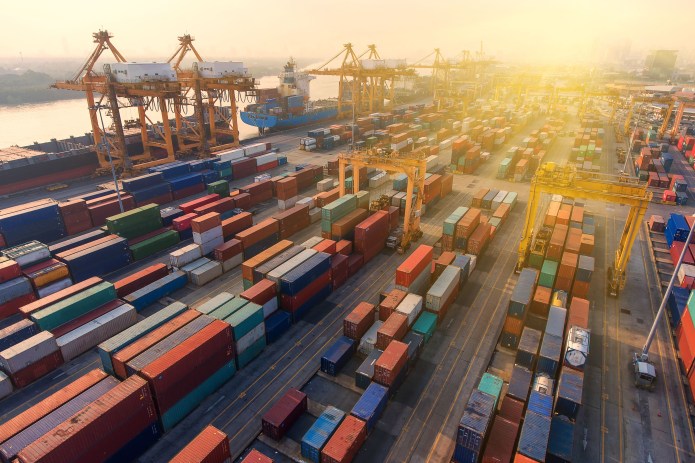What a second Trump administration could mean for emerging markets
Portfolio Manager Daniel Graña notes that the most assertive of Donald Trump’s economic proposals could range from being unhelpful to harmful for emerging markets (EMs).

4 minute read
Key takeaways:
- The tendency toward deglobalization could accelerate if Trump is not merely using tariff proposals as a negotiating tactic with trading partners.
- Given their dependence on the U.S. as an export destination, many EMs would be negatively affected by elevated trade barriers.
- With China perhaps the primary target of decoupling, other EMs could benefit by becoming alternative destinations for the global manufacturing base.
Of all the elections packed into 2024, the U.S. presidential race is likely the one most consequential for emerging markets (EM). The more insular policies suggested by former President Donald Trump would likely mark a further step away from the globalization trend that has greatly benefited EMs. With the odds of a Trump victory even (at the time of writing), investors with EM exposure should consider how his approach to trade and geopolitics could impact the asset class.
The reemergence of tariffs
Higher tariffs on the part of a U.S. administration would mark a direct hit on EM exports. Most emerging countries rely to varying degrees on exports to the large U.S. end market. And while steps have been taken within EMs for consumption to comprise a greater portion of economic growth, flagging domestic demand has stalled many of these efforts.
It remains to be seen whether the most aggressive of Trump’s proposals are merely a negotiating tactic. Any steps to limit trade between the U.S. and EMs would have varying effects depending upon the industry and source country. Some export demand – e.g., semiconductors – is price inelastic. Consequently, export volumes could remain stable even if tariffs push prices higher. Lower-value and commoditized EM exports, however, could lose market share to domestic alternatives should tariffs reach punitive levels. In nearly all instances, higher tariffs inhibit global growth and tend to be inflationary.
Some of Trump’s proposed initiatives are aimed at protecting favored domestic industries; others are driven by geopolitical considerations such as reducing exposure to China. The upshot is that potential beneficiaries include both developed market manufacturers and select EM countries. Chief among the latter are Vietnam, India, and Mexico.
Inviting reaction
While the size of the U.S. economy may afford it leverage in trade negotiations, many of Trump’s proposals – should they be enacted – would be met with countermeasures. An acceleration in economic decoupling would likely force Chinese policymakers to enact even more aggressive stimulus. Unlike in periods past, these initiatives probably wouldn’t spill over to the EMs that export commodities and subcomponents into China’s manufacturing base.
And decoupling works both ways. Where allowed within the national security context, China would still seek to import high-value, Western products with intellectual property. That would likely not extend to U.S. agriculture goods, which could be substituted with South American commodities. China could also be quick to curtail imports of European luxury goods and automobiles if Europe imposed its own trade constraints on the Asian giant.
Not there yet
Emerging markets greatly benefited from the era of rapid economic integration, allowing many countries to move toward middle-income status. The transition to a consumption-driven economy, however, is slow.
To that end, the U.S. is still an essential end market for EM products, as well as a source of innovative industrial inputs. In both instances, EMs, for the most part, remain price takers in their relationships with the U.S. Consequently, their economic fates are inextricably linked to U.S. policy. Should the push toward deglobalization and protectionism accelerate, these countries could face an era of slowing growth and elevated inflation.
An emerging market debt view
Compared to during the previous Trump presidency, EM growth today looks relatively resilient. Most countries have withstood inflationary shocks, helped by policies that enabled flexible exchange rates. Many of Trump’s proposals are aimed at China. Accordingly, some of these policies could lead to a reallocation of production to other EMs. While there are clearly tensions in the U.S.-China relationship, China is currently in a precarious state, so perhaps the country would be more inclined to make deals with a Trump administration than in the past.
– Thomas Haugaard, Portfolio Manager Emerging Markets Debt Hard Currency Team
Emerging market investments have historically been subject to significant gains and/or losses. As such, returns may be subject to volatility.
Monetary Policy refers to the policies of a central bank, aimed at influencing the level of inflation and growth in an economy. It includes controlling interest rates and the supply of money.
These are the views of the author at the time of publication and may differ from the views of other individuals/teams at Janus Henderson Investors. References made to individual securities do not constitute a recommendation to buy, sell or hold any security, investment strategy or market sector, and should not be assumed to be profitable. Janus Henderson Investors, its affiliated advisor, or its employees, may have a position in the securities mentioned.
Past performance does not predict future returns. The value of an investment and the income from it can fall as well as rise and you may not get back the amount originally invested.
The information in this article does not qualify as an investment recommendation.
There is no guarantee that past trends will continue, or forecasts will be realised.
Marketing Communication.

